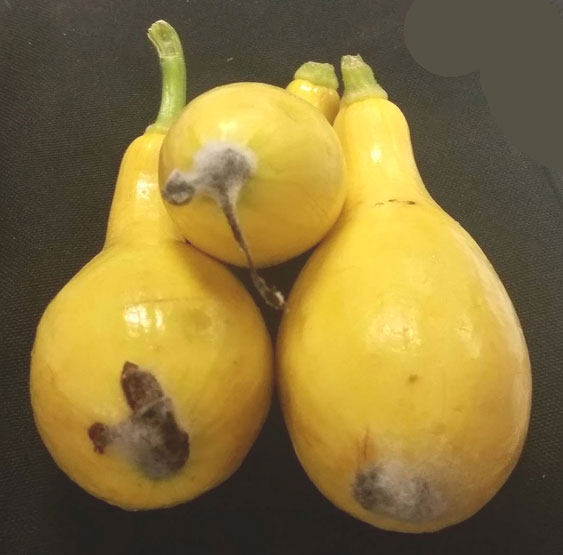During a recent training class, hosted by the Southeast Produce Council, we encountered some yellow summer squash that was showing quite a bit of surface mold affecting the blossom end.

The class was surprised when I told them the USDA would not score this as a defect, as white surface mold is not considered as “materially affecting” the appearance of the squash. A few in the class, from different wholesale/retail companies, from different cities, said that the USDA inspectors do score this defect, as they had recently had some squash inspected. To clarify the confusion I told the class I would check with the USDA officials for their guidance.
A specialist from the USDA’s Standardization Section wrote me back and told me the white surface mold is not considered as being a defect on the squash. He wrote, “Generally, surface mold on squash is not a defect. The photo you attached showing surface mold on the blossom end is not scorable. The inspector may describe the surface mold in the “OTHER” section on the FV-300 using general terms. There may be instances when the surface mold is so dark (black) and excessive (heavy, covering a large area) that it materially or seriously detracts from the appearance. If this is the case, the inspector may score it as a condition factor using the scoring guide for cleanness.”
The FV-300 is the official USDA Certificate of Inspection. To summarize, the surface mold could only be scored as a defect if the mold was dark or black in color. The idea is the white surface mold will dry up and not be visible when put on display for retail.
You may sometimes find small nicks, scuffing or injuries to the skin of the squash, and these defects will also have whitish surface mold accompanying them. The scuff marks or injuries may be scored as defects, if they alone materially affect the appearance of the squash, ignoring the surface mold. It would be advised to describe the defect, for example, “Most cartons show some of contents having white to gray surface mold affecting scuffed areas.”
Even though the USDA Inspectors are instructed to not score white to gray surface mold affecting summer squash, many retail chains may disagree, and actually have this listed as a defect in their company specification. We were lucky to have a grower/shipper representative in the class and he was equally surprised when I told him the USDA would not score white surface mold as a defect. He reassured the class there is no way their company would allow the surface mold, as seen above, in their containers. I am sure that would be the norm, as a shipper would never force a good customer to be stuck with the moldy squash.
I’d be curious to hear what you all think.

One Comment on “Summer Squash- Surface Mold”
Ive rejected loads of zucchini for stem end mold several times, despite it probably not being an official defect unless there is actual decay on the stem underneath